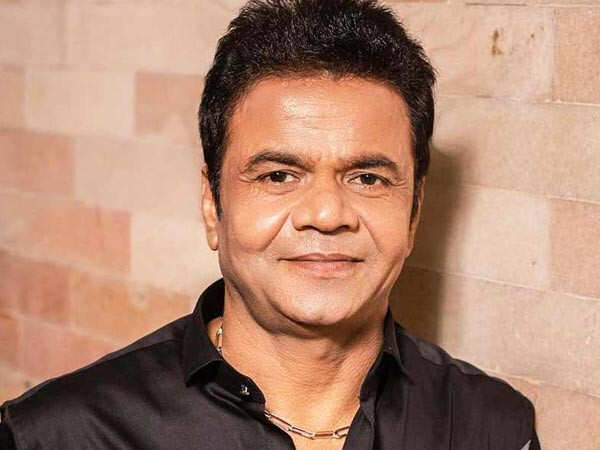
In many ways, Assassin’s Creed Shadows has been a long time coming. The setting of feudal era Japan has been one of the dream locales that fans and even Ubisoft developers have had for the franchise’s jaunt through humanity’s secret history, and it’s finally serving as the backdrop for the next entry. But Shadows has also been a game that has seen some notable delays to ensure the developers stick the landing. Simply put, there’s a lot of anticipation for what’s in store for Ubisoft’s big return to a massive Assassin’s Creed RPG.
After spending several hours playing Assassin’s Creed Shadows, the next entry keeps up with the satisfying action and traversal that the series is known for, but it also showcases a sharper eye for worldbuilding, and giving its two protagonists their time in the spotlight. From my time sneaking through fortresses, taking in the sweeping vistas of the open world, and pulling off slick combat finishers, I got to see just how developer Ubisoft Quebec has improved its balancing act of satisfying action, RPG systems, and rewarding open-ended exploration in a captivating new setting that’s been long overdue.
Since Assassin’s Creed Origins in 2017, the series has stayed comfortably within the realm of the open-world RPG, offering an expanded scope and narrative decisions to alter the course of the story. While this shift led to some growing pains for the series, it has gotten a better handle on the additional layers to gameplay without compromising the fantasy of being an ancient assassin. With Shadows, the latest attempt at an Assassin’s Creed RPG shows that developer Ubisoft may have also cracked the code on the role-playing element with its two unique protagonists, something the series has struggled to present in a way that hasn’t muddied the narrative waters.
Ubisoft may have also cracked the code on the role-playing element with its two unique protagonists, something the series has struggled to present in a way that hasn’t muddied the narrative waters.
Speaking with creative director Jonathan Dumont, he stated that Assassin’s Creed Shadows has an underlying theme about unity. Given the backdrop of Feudal Japan and its period of unification, the game focuses heavily on the bond between the two leads and their growth throughout the game.
“For me, this game has a message about unity, and fighting for those who cannot, which is a responsibility that both of the characters have in the game,” he said. “I think that it’s about finding your place in that world, and I think both characters represent that and the importance of community and the importance of taking care of each other and going on this journey together through Japan in this period of unrest.”
The latest game puts its sights on a new mystery deep within a revamped Animus program. In this new simulation, we focus on feudal era Japan and the secret history of both Yasuke, a historical African slave who became a full-fledged Samurai, and Naoe, a female Shinobi taking up the mantle of her father’s legacy. The pair eventually team up to navigate a radically changing 1500s Japan, rubbing shoulders with other historical allies such as Oda Nobunaga and Kuroda Kanbei while taking down a shadowy cabal of warlords manipulating the country’s attempt at unification from within.
I spent most of my playtime exploring Harima Province, one of the early zones that featured a questline involving an insidious plot to undermine the region’s power structure. The world of Assassin’s Creed Shadows is massive, but thankfully not to the ridiculous size of Valhalla. That said, plenty of opportunities were packed in this province, and the viewpoints to observe nearby points of interest helped point me in the right direction. A general theme I found compelling was how Shadows emphasized harmonizing with the open world – a cultural element the developers wanted to highlight with the Japanese setting.
This theme also extends to the side activities and how the world changes over time with shifting seasons that alter the terrain. Shadows ditches the need for hunting, and instead, you can find and draw rare wildlife found in the wild. It was an odd activity at first, but I found them endearing and a surprisingly wholesome change of pace. I soon found myself being taken in by how atmospheric and thoughtful the setting was.
Shadows also emphasizes the dynamic between the two protagonists and their agency within the world after bonding over being outcasts within the country. I really enjoyed their dynamic within the story, and they play well with each other during cutscenes. Yasuke is a gentle giant and wise Samurai enforcer who offers some poignant insights while learning about Japanese culture. Naoe’s growth into an assassin with a heavy legacy to uphold shows an early look at the dramatic highs of the main story.
You’re free to switch off characters in the open world and during moments in the main story, letting you play as who you want in most key missions. But in an interesting addition, you also have the option of playing in Canon Mode, which presents a defined story without major narrative choices – which was added after developers saw how many fans were debating what the definitive story was for Valhalla and Odyssey.
Yasuke and Naoe also represent the different extremes of Assassin’s Creed’s combat and stealth experiences, which have also seen clear upgrades across the board in Shadows. For combat, there’s a heightened need for dodging and parrying strikes, crucial to piercing through armor to deliver a killing blow. It injects Ghost of Tsushima’s offense and defensive style of swordplay, but it also has familiar AC combat skills such as power grabs and the always funny kick move I used plenty of times.
The setting of Japan was a setting that the developers have wanted to make for some time, and according to game director Charles Benoit, they also saw an opportunity to have the series lean further into its stealth-action roots.
It also has familiar AC combat skills such as power grabs and the always funny kick move I used plenty of times.
“If you look at the brand in general, we had a lot of stealth focus in the first few games, and then with the RPG, we saw a rise more of a rise with combat in Origins, so I feel Shadows is mixing the whole era of Assassin’s Creed and bringing about a return to stealth as a focus,” he said. “But combat is still very much a core pillar for us, which is why we wanted two characters. With the Japan setting, we have the archetypes of the Samurai and Ninja, and that gives a great opportunity to develop both equally.”
I generally felt pleased with the more thoughtful approach to combat. However, it also comes with more challenges, which unexpectedly made some of the encounters in the game feel a bit more difficult. The game also struggled to present fights with multiple foes accurately, and it can be easy to get overwhelmed by enemies coming in off-screen. Still, when the new combat in Shadows hits, it certainly does hit.
What impressed me most with Shadows was the revamped stealth gameplay, which appropriately incorporates elements from Ubisoft’s other stealth-action series, Splinter Cell. With the new visibility meter, you can see how open you are. Furthermore, there’s a greater emphasis on light and darkness; you can even snuff out candles to add some cover. My favorite addition is the ability to go prone, which, as you can expect, is a game-changer for stealth. Playing stealth with Naoe was so satisfying, and it does well to showcase just how much that gameplay style has improved.
While both characters can combat and stealth, they also have clear limitations. For instance, Yasuke is a formidable fighter and is capable of ambushing enemies, however his large stature is not ideal for advanced stealth. In addition to being incapable of climbing certain areas, he’s also not so great at performing the leap of faith.
As for Naoe, she’s a skilled assassin with access to a grappling hook and smoke bombs. However, Naoe’s nimble combat style is far more reliant on parrying and dodging, and one hit from an elite enemy’s heavy strike can take a chunk of her health bar. While pulling off Naoe’s combat skills was satisfying, I often had to resist the urge to take out every enemy and run for it when things got out of hand.
Continuing with Assassin’s Creed Valhalla, you can manage and upgrade a base of operations. As you recruit allies, they’ll head to your hideout to open up shops and offer new side missions that incentivize revisits to previous zones. But Shadows takes this feature a step further by allowing you to build out your custom village in the vein of Animal Crossing.
The town builder mode offers plenty of options to add necessities and some personal touches to the hideout. I spent an unexpected amount of time building more housing and decorating my space with Shinto shrines and pets – such as cats and tanuki. There are also side activities, such as a visually striking meditation mini-game, to help you earn additional perks. It’s an unexpectedly cozy side activity for an AC game, and I was quickly taken in by how satisfying it was to walk around a massive village I had made in a reasonably short time.
So far, Assassin’s Creed Shadows is shaping to be a solid follow-up to Ubisoft’s ambitious Valhalla. Even if the familiar crop of open-world bugs and quirks popped up during my time, I still found a great deal to appreciate with Shadows and its worldbuilding. While this conceit is not an uncommon backup for video games – which can be easy to mess up with insensitive representation – Assassin’s Creed Shadows so far does well to justify its take on an open-world RPG set during this culturally rich era, especially in its handling of the two protagonists. With the release coming soon, I’m eager to see how Ubisoft’s take on Assassin’s Creed’s journey to Japan will come together.














